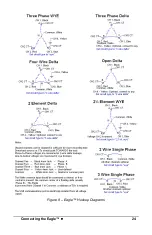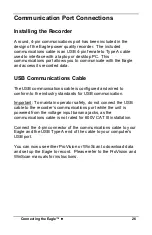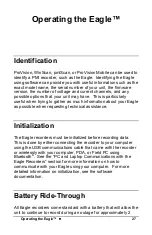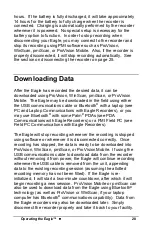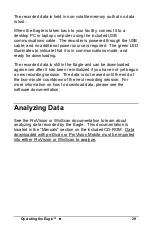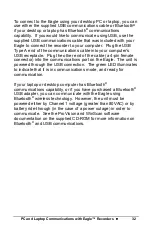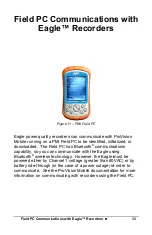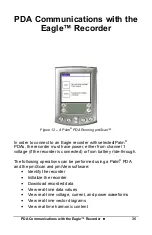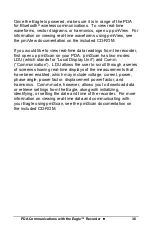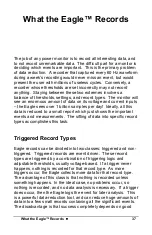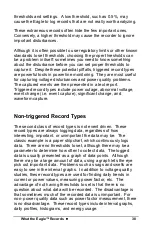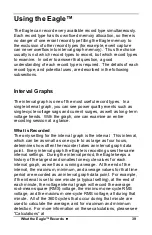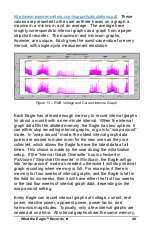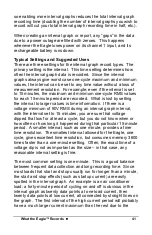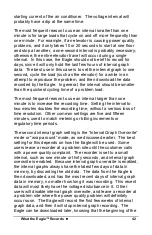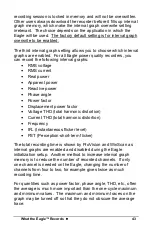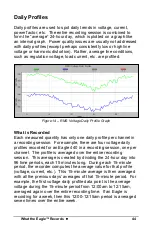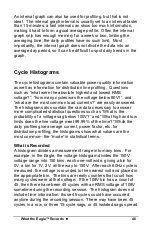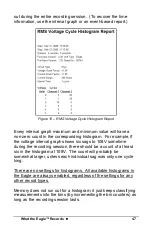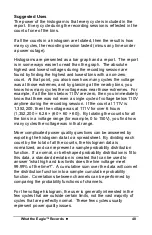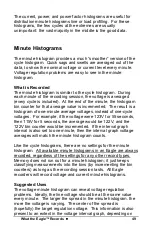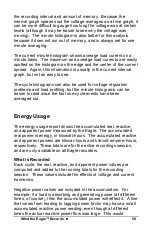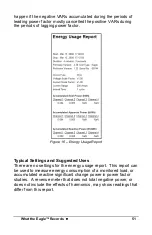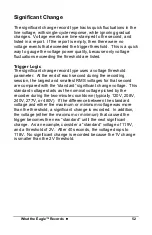
What the Eagle™ Records
••••
37
What the Eagle™ Records
The job of any power monitor is to record all interesting data, and
to not record unremarkable data. The difficult part for a monitor is
deciding which events are important. This is the primary problem
of data reduction. A recorder that captured every 60 Hz waveform
during a week’s recording would never miss an event, but would
present the user with millions of useless cycles. Conversely, a
recorder whose thresholds are set incorrectly may not record
anything. Staying between these two extremes involves a
balance of thresholds, settings, and record types. The monitor will
see an enormous amount of data on its voltage and current inputs
– the Eagle sees over 1 billion samples per day! Ideally, all this
data is reduced to a small report which just shows the important
events and measurements. The sifting of data into specific record
types accomplishes this task.
Triggered Record Types
Eagle records can be divided into two classes: triggered and non-
triggered. Triggered records are event driven. These record
types are triggered by a combination of triggering logic and
adjustable thresholds, usually voltage-based. If a trigger never
happens, nothing is recorded for that record type. As more
triggers occur, the Eagle collects more data for that record type.
The advantage of this class is that nothing is recorded unless
something happens. In the ideal case, no problems occur, so
nothing is recorded, and no data analysis is necessary. If a trigger
does occur, then the Eagle logs the event for later analysis. This
is a powerful data-reduction tool, and can reduce huge amounts of
data into a few small records containing all the significant events.
The disadvantage is that success completely depends on good


